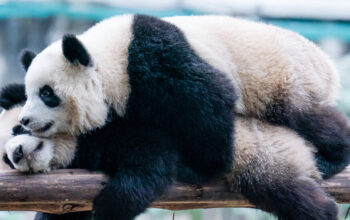
Xi Jinping tightens his grip
To no one’s surprise, Xi Jinping has formally secured a third term as head of China’s Communist Party.
He thoroughly shook up the party’s top tiers, elevating loyalists and forcing out moderates. In so doing, Xi consolidated his power and created a new ruling elite primed to elevate his agenda of bolstering national security and turning China into a technological great power. And in a moment packed with symbolism, Hu Jintao, who presided over one of China’s more open and prosperous periods, was ushered out of an important political meeting.
Xi chose six men with longstanding ties to him for the Politburo Standing Committee, the top echelon of the party. Wang Huning, his chief theoretician, remains on the body, a sign that hard-line policies and the role of ideology will persist. Xi also appointed to the Politburo, the party’s second tier, a number of domestic security officials and military commanders, as well as several people with backgrounds in science and engineering.
As Xi tightens his control, Beijing is likely to remain defiant in the face of international criticism of its authoritarian policies. Notably, at the party congress this week, Xi did not mention two long-repeated maxims about peace and strategic opportunity. The omissions revealed Xi’s anxieties about an increasingly volatile world, and warned of a looming conflict with the U.S. for global dominance.
Analysis: To supporters, Xi’s centralized control and continuity are strengths. But some argue that ousting critics could leave Xi’s government vulnerable to failures like its mismanagement during the early days of Covid-19.
Standing Committee: New appointees include Ding Xuexiang, Xi’s right-hand man, and Li Qiang, who worked under Xi when they were local officials in Zhejiang Province. Li oversaw a contentious Covid lockdown in Shanghai and is now in line to become China’s new premier.
Other updates:
Boris Johnson bows out
Britain’s Conservative Party plans to select a new prime minister this week, days after Liz Truss resigned.
Russian authorities have celebrated the adoptions with patriotic fanfare. On state-run television, officials offer teddy bears to new arrivals, who are portrayed as abandoned children being rescued from war.
Oct. 23, 2022, 4:04 p.m. ET
But this mass transfer of children is a potential war crime. Some were taken after their parents had been killed or imprisoned by Russian troops, according to Ukrainian officials. And while many did come from orphanages and group homes, the authorities also took children whose relatives or guardians want them back.
“I didn’t want to go,” one 14-year-old girl told my colleague Emma Bubola. “But nobody asked me.”
Fighting: Russian forces pounded Ukraine’s power plants with some of the heaviest missile strikes in weeks.
THE LATEST NEWS
Asia Pacific
There is a name for the specific type of grief that both refugees and migrants experience. It’s “cultural bereavement.”
Lives lived: Peter Schjeldahl, an art critic whose enthusiasm and elegant reviews helped define New York’s art scene, died at 80. Read his witty essay from 2019 on his lung cancer diagnosis.
GLOBAL GASTRONOMY
Noma in Kyoto
Noma, the celebrated Danish restaurant, will open a 10-week pop-up in Kyoto, Japan. It will span sakura (cherry-blossom) season and incorporate ingredients and methods from the region, which is the historic center of Japanese Buddhism.
The very structure of the meal also references Buddhist culinary traditions. The ubiquitous modern tasting menu has its roots in kaiseki, a carefully orchestrated progression of small plates that grew from a Buddhist tea ceremony into a luxurious cuisine in Kyoto. In the late 1960s, elements of the meal began to flow from Japan into fine dining, often through the influential Tsuji culinary school in Osaka.
The conceptual approach to ingredients was partially born in kaiseki, too: Kyoto’s kaiseki menus have always changed to reflect the seasons. That idea has given rise to foraging, restaurant gardens and the farm-to-table movement.
“I was taught that the tasting menu was invented by the French and then reinvented in Spain,” René Redzepi, Noma’s chef, told The Times. “I had no idea of the vast repository of ideas and techniques that is Japanese food.”
Details: Noma Kyoto will be open from March 15 through May 20. The meal will cost just over 850 euros (about $839) per person and reservations will open on Nov. 7 on Noma’s website.



